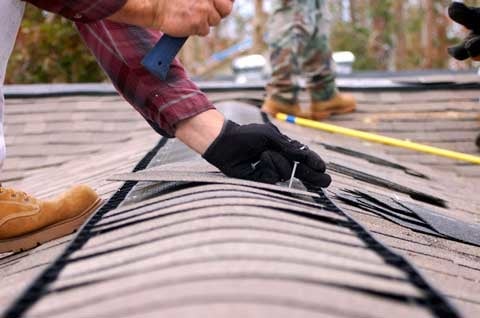A leaking garage roof can catch you off guard—especially when you need that space to stay dry and protected. While the structure may seem secondary to your main home, it plays an important role in keeping tools, vehicles, and storage items safe from the elements. That’s why addressing any signs of wear or damage quickly is key.
This guide will walk you through everything you need to know about garage roof repair, from diagnosing the problem to making long-term fixes that last. Harveys Five Star Roofing has helped countless homeowners get their roofs back in shape with practical repairs and preventative work.
With the right approach and a bit of guidance, you can understand the repair process more clearly—even if the final fix ends up being handled by a professional like us.
Why Garage Roofs Leak in the First Place
Garage roofs can develop leaks for many reasons, and most issues start small. Over time, weather conditions, material aging, and neglected maintenance combine to cause wear and tear. If your garage was built years ago or has never been inspected, it may have outdated materials that don’t hold up well to the elements anymore.
Flat or low-slope garage roofs, in particular, are more likely to collect debris and standing water. Cracked flashing, brittle shingles, or missing sealant can give rainwater an easy way in. Once moisture makes its way beneath the roofing surface, it can spread further than you think.
A Guide to Garage Roof Repair
Diagnosing the Problem
Before thinking about repairing anything, you need to identify where the problem is coming from. That can take a bit of detective work. Head into the garage during or right after a rainstorm. Look for any signs of water infiltration—dark spots on the ceiling, peeling paint, or active drips are all strong indicators.
Next, take a careful look at the outside of the roof. Check for missing shingles, clogged gutters, cracked flashing, and any signs of sagging or pooling water. Remember that leaks don’t always come from where you see the water indoors. Water can travel across beams and materials before it shows up inside. That’s why doing both an internal and external check is important.
Choosing the Right Repair Approach
Once you understand the source and scope of the leak, it’s time to decide how to address it. Some small problems can be handled on your own, especially if you have experience with roofing materials. However, more complex repairs—or signs of widespread damage—are better left to professionals like our team at Harveys Five Star Roofing.
For temporary fixes, waterproof roof sealant can sometimes stop a leak from spreading. It’s not a long-term solution, but it can give you time to arrange for a full repair. If a small section of shingles is cracked or curling, you might be able to replace those individually. Just be sure that the new shingles match the existing ones in material and weight to avoid imbalance or further damage.
Flat garage roofs with membrane or metal surfaces require different repair techniques. Membranes may need patching, while metal roofs often call for resealing seams or replacing corroded panels. Every material has its own repair process, so it’s important to know what you’re working with.
Preparing the Surface
Before making any repairs, the roof surface must be clean and dry. This is one of the most overlooked parts of the process. Remove debris like leaves, twigs, or old caulking that may be covering up cracks.
If moss or algae has formed, gently scrub it off with a soft brush and a mixture of warm water and vinegar. Avoid pressure washers—they can damage weakened materials and force water deeper into cracks.
For flat roofs, use a broom or blower to clear away pooling water and debris. Be sure to inspect around vents, pipes, or skylights too. These are common problem areas where leaks can form, especially if the flashing is loose or worn.
Applying the Repair
Now that the area is clean, you can move forward with your chosen repair method. For shingle replacement, remove the damaged pieces and lift the tabs of the ones above to slide new shingles into place. Use roofing nails to secure them, and apply roofing cement to seal the edges.
If you’re using a sealant to patch cracks, apply it evenly using a caulking gun or trowel. Give it enough time to cure before exposing it to more rain. Read the product label carefully. Some sealants may require dry weather for at least 24 hours after application.
Metal roofs with rusted seams may need both sanding and resealing. After removing corrosion, apply a metal roof patch or compatible tape, followed by a weatherproof sealant. For more serious rust damage, the affected panel may need to be replaced.
Preventing Future Damage
Once your garage roof is patched up, you’ll want to take steps to avoid future issues. Routine maintenance can go a long way. Clear out gutters and downspouts every season to help rainwater flow off the roof instead of pooling. Check the flashing and sealant around vents once or twice a year to make sure it hasn’t dried out or cracked.
It’s also worth scheduling a professional roof inspection every couple of years. Harveys Five Star Roofing offers thorough evaluations that catch small problems before they grow into costly repairs. We can also make recommendations based on your specific roofing material and local weather patterns.
If your garage roof has reached the end of its lifespan—or you find yourself making patch after patch—it may be time to consider a full roof replacement. While that’s a bigger investment upfront, it often pays off in reliability and peace of mind.
When to Call in the Experts
While many homeowners feel confident about handling minor repairs, not every issue is safe or straightforward. If you’re dealing with widespread rot, mold, or structural damage, it’s best to leave the job to trained professionals. Walking on a weakened roof can be dangerous, especially if the decking underneath is compromised.
We’ve seen a lot of DIY attempts where patch jobs only delayed the inevitable. Poorly done repairs can trap moisture instead of stopping it. This can lead to worse problems later on. That’s why our team is always ready to step in and offer practical, long-lasting solutions.
Harveys Five Star Roofing knows how to assess your garage roof from every angle. We don’t just look for surface damage—we examine the underlying structure to be sure everything is solid and dry.
A Final Word on Garage Roof Repair
Garage roof repair may sound like a weekend task. However, it often requires more attention and experience than you’d expect. No matter if you’re dealing with a tiny leak or thinking about a full replacement, what matters most is doing the job right the first time.
We’re here to help you get your garage roof back in shape with durable fixes that last. From patchwork to full installations, our team brings years of hands-on experience and a commitment to quality craftsmanship.
If your garage roof is showing signs of wear—or you just want peace of mind before the next storm hits—reach out to us at Harveys Five Star Roofing. Explore our residential and commercial roofing services today.









